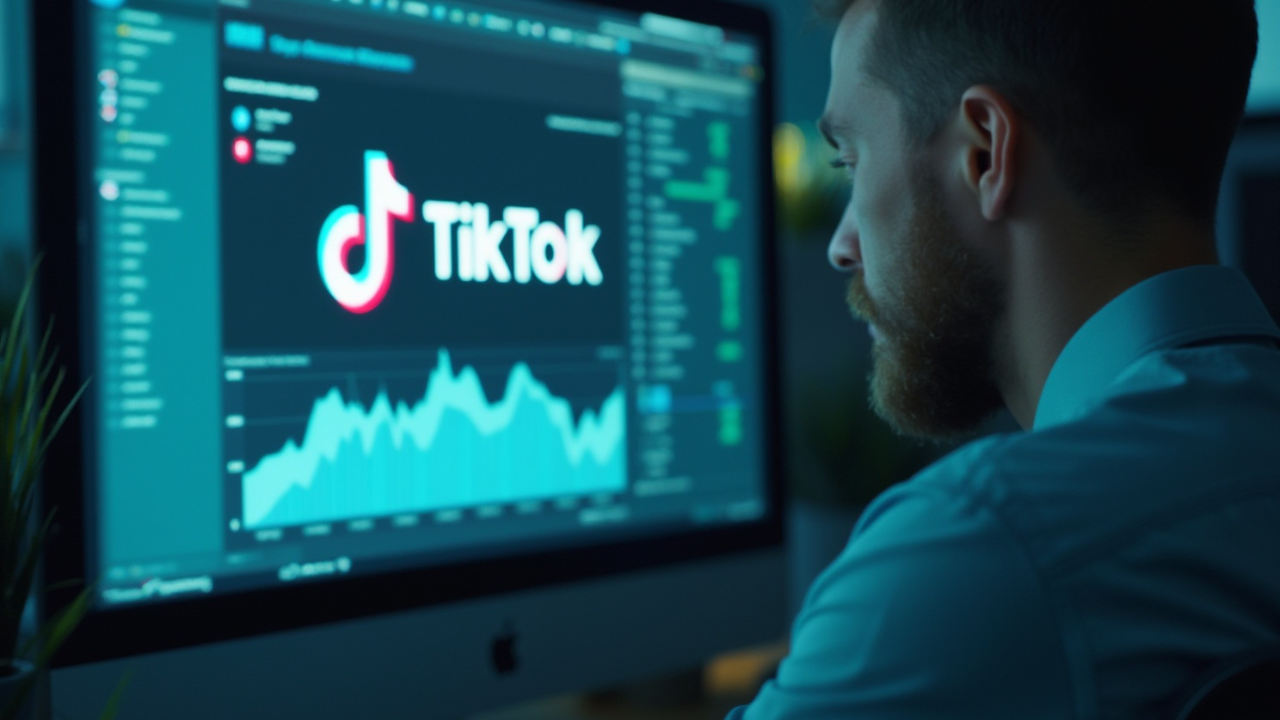
LinkedIn Lookalike Audience is About to Sunset
The LinkedIn Lookalike Audience stands as a valuable asset for advertisers on the platform, serving as a tool to extend their reach to new and potential customers sharing similarities with their established customer base. Nevertheless, recent disclosures from LinkedIn have revealed that this feature is scheduled to be phased out on February 29, 2024. This article delves into an exploration of the LinkedIn Lookalike Audience, explaining its functionality and significance for advertisers. Furthermore, it investigates the forthcoming changes and discusses the strategies that advertisers can employ to adapt and thrive in the evolving landscape of LinkedIn advertising. As we bid farewell to the Lookalike Audience, understanding its essence and embracing the innovations on the horizon becomes paramount for advertisers seeking effective and precise audience targeting on the platform.
How Does LinkedIn Ads Work?
LinkedIn Ads function as a powerful tool for advertisers looking to connect with a professional and business-oriented audience. The platform offers a variety of ad formats to cater to diverse campaign objectives. Sponsored Content appears seamlessly in users' newsfeeds, promoting engagement with rich media such as images, videos, and carousel ads. Sponsored InMail allows for personalized messaging sent directly to users' inboxes, ensuring a direct and targeted approach. Display Ads, on the other hand, are prominent visual elements appearing on the right side of the LinkedIn interface, enhancing brand visibility.
LinkedIn's unique targeting options set it apart in the realm of digital advertising. Advertisers can precisely define their audience based on factors like job title, industry, company size, and even specific LinkedIn groups, ensuring that the ads reach the most relevant professionals. Matched Audiences leverages data integration, enabling retargeting of website visitors, contact lists, or engagement with previous ads. In contrast, Lookalike Audiences expands reach by targeting users with similarities to existing customers. The auction-based bidding system ensures cost efficiency, allowing advertisers to set bids based on their campaign objectives.
The platform's powerful analytics provide valuable insights into ad performance, including impressions, clicks, and conversions, enabling advertisers to optimize campaigns for better results. Additionally, LinkedIn's integration with third-party tools facilitates comprehensive tracking and measurement of ad effectiveness.
LinkedIn Ads work synergistically with the professional nature of the platform, allowing businesses to foster Business to business (B2B) connections, recruitment efforts, and brand awareness within a context of professionalism and career-focused engagement. As users interact with content relevant to their industry and professional interests, advertisers can align their messaging with the user's mindset, creating a conducive environment for meaningful interactions. In essence, LinkedIn Ads operate as a sophisticated and targeted means for businesses to engage with a high-caliber audience, leveraging the platform's unique features and comprehensive suite of tools to achieve specific marketing objectives in the professional sphere.
What is a LinkedIn Lookalike Audience?
A LinkedIn Lookalike Audience is a powerful targeting option that allows advertisers to expand their reach beyond their existing connections. It works by analysing the characteristics of your current audience and finding similar individuals on LinkedIn who have not yet engaged with your brand. This enables advertisers to tap into a larger pool of potential customers who are likely to be interested in their products or services.
Imagine you're an artist who has successfully sold your paintings to a specific group of collectors. With a Lookalike Audience, you can find other art enthusiasts who share similar preferences and are more likely to appreciate your work. It's like finding kindred spirits who have an inherent interest in what you have to offer.
Let's delve deeper into how a LinkedIn Lookalike Audience is created. When you decide to create a Lookalike Audience, LinkedIn's algorithm analyzes the data from your existing connections, including their job titles, industries, skills, and interests. It then identifies patterns and similarities among these individuals, allowing it to create a profile of your ideal customer.
But how does LinkedIn find these lookalikes? Well, once the algorithm has created a profile of your ideal customer, it searches through its vast user database to find individuals who match those characteristics. These individuals may not be directly connected to you, but they possess the same qualities that make them highly likely to engage with your brand.
Now, you might be wondering how accurate this targeting method is. LinkedIn's Lookalike Audience feature is built on a foundation of advanced machine learning and data analysis. It constantly learns and adapts to improve its accuracy over time. This means that as you continue to engage with your Lookalike Audience, LinkedIn refines its understanding of your ideal customer, ensuring that you reach the right people with your advertising campaigns.
Why Is LinkedIn Removing Lookalike Audience?
The plan to eliminate the LAL Audience is underpinned by a strategic shift in the realm of digital advertising, mirroring Google's prior move to phase out Similar Audiences. This deliberate decision is more than a mere adjustment; it resonates as a resounding signal that the advertising landscape is undergoing a profound transformation. The move signifies a departure from conventional methods and heralds the ascendancy of more dynamic, artificial intelligence (AI)-driven approaches.
By disbanding the LAL Audience, there is a tacit acknowledgment that the traditional paradigms of audience targeting are no longer sufficient in the evolving digital ecosystem. This shift mirrors broader industry trends that emphasize the need for greater adaptability and responsiveness in advertising strategies. The days of static, one-size-fits-all audience targeting seem to be waning, giving way to a future where campaigns are meticulously shaped by AI algorithms that dynamically respond to real-time data and user behavior.
Google's decision to sunset Similar Audiences last year serves as a precursor to this transformation, and the removal of the LAL Audience further solidifies the industry's trajectory. The use of AI in advertising is gaining prominence, and marketers are recognizing its potential to enhance targeting precision, optimize campaign performance, and deliver a more personalized user experience.
In essence, the elimination of the LAL Audience is not merely a housekeeping measure but a strategic pivot toward embracing the power of AI in shaping the future of digital advertising. It signals a commitment to staying ahead of the curve, leveraging technology to navigate the complexities of a rapidly evolving digital landscape. As the industry continues its march towards greater dynamism and adaptability, marketers are compelled to recalibrate their approaches, placing AI-driven strategies at the forefront of their advertising arsenal.
What’s Next for Advertisers
The imminent sunset of the LAL (Lookalike) audience on LinkedIn heralds a significant evolution in the platform's advertising landscape, introducing novel features poised to redefine how advertisers connect with their target demographics. As we bid farewell to the familiar terrain of Lookalike audiences, the question arises: what's next for advertisers seeking effective and precise audience targeting on LinkedIn?
The answer lies in the introduction of two powerful alternatives designed to enhance the efficacy of campaigns: Predictive Audiences and Audience Expansion.
Predictive Audiences:
LinkedIn's foray into predictive audiences marks a strategic leap forward, leveraging the amalgamation of advertisers' data sources with the platform's sophisticated artificial intelligence (AI). This synergy facilitates the automatic generation of bespoke custom audiences tailored to specific campaign objectives. Whether drawing from contact lists, conversion data, or Lead Gen Form sources, Predictive Audiences empower advertisers with a dynamic tool for pinpoint targeting.
By harnessing the prowess of LinkedIn's AI, advertisers can transcend the limitations of conventional audience creation, allowing for more nuanced and accurate audience segmentation. This predictive approach enables campaigns to adapt and evolve in real-time, aligning with shifting user behaviors and preferences. The era of static audience targeting gives way to a more dynamic, responsive paradigm, ensuring that campaigns remain finely tuned and relevant.
Audience Expansion:
In tandem with the phasing out of Lookalike audiences, LinkedIn introduces Audience Expansion, a feature designed to broaden advertisers' reach with audiences sharing similarities with their target demographic. This innovative tool operates seamlessly with Matched Audiences and LinkedIn attribute targeting, such as skill or interest-based parameters.
Audience Expansion addresses the imperative need for diversification in audience targeting, especially in an environment where user preferences and demographics continually evolve. This feature empowers advertisers to extend their campaign reach beyond the confines of a narrowly defined audience, exploring new avenues and engaging potential customers who exhibit traits akin to their ideal target audience.
In essence, as LinkedIn bids adieu to the Lookalike audience, it simultaneously opens the door to a new era of precision and adaptability. Predictive Audiences and Audience Expansion emerge as indispensable tools, equipping advertisers with the means to navigate the ever-shifting landscape of digital advertising on LinkedIn. With these innovative features at their disposal, advertisers can harness the power of AI-driven insights and expansive audience targeting, ensuring their campaigns not only endure but thrive in the dynamic realm of digital marketing.
𝗛𝗼𝘄 C𝗮𝗻 Y𝗼𝘂 P𝗹𝗮𝗻 Y𝗼𝘂𝗿 P𝗮𝘁𝗵 F𝗼𝗿𝘄𝗮𝗿𝗱?
Navigating the forthcoming adjustments to LinkedIn's advertising dynamics requires a strategic approach to ensure a seamless transition and continued campaign efficacy. Commencing from now until February 29th, advertisers are encouraged to proactively engage with the platform's evolving features by initiating the creation and incorporation of Predictive Audiences or activating Audience Expansion for ongoing campaigns.
In the face of this transformation, it is crucial to recognize that Lookalike Audiences, left unused, will undergo archival 30 days later, transforming into static datasets devoid of refreshing capabilities. While these archived Lookalike Audiences can still be integrated into campaigns, it's imperative to comprehend that they will remain static, lacking the dynamic adaptability characteristic of their predecessors.
Furthermore, it is crucial to note that expired audiences will be permanently deleted, rendering them inaccessible for future use. This underscores the necessity for timely adaptation to the evolving landscape, emphasizing the importance of proactively embracing the changes.
The strategic implications of these modifications extend beyond mere challenges, presenting advertisers with an array of novel opportunities. The adaptability of campaigns to leverage Predictive Audiences and Audience Expansion reflects a paradigm shift towards more dynamic, responsive advertising strategies.
To navigate these changes successfully, marketers are encouraged to adopt a forward-thinking mindset, exploring the functionalities of these new features. Embracing the transformative power of Predictive Audiences allows advertisers to harness the synergy of their data sources with LinkedIn's AI, crafting customized audiences that dynamically respond to real-time campaign needs.
Simultaneously, incorporating Audience Expansion provides an avenue to broaden reach by targeting audiences that share similarities with the ideal customer profile. These changes, while necessitating adjustment, serve as a catalyst for innovation and a catalyst for achieving heightened precision in audience targeting.
As a digital marketer, staying ahead of these changes is not merely a choice; it is an imperative. Remaining informed about the evolving features and adapting strategies to leverage them positions advertisers at the vanguard of the industry, ensuring sustained success in the dynamic realm of digital advertising. In essence, these alterations beckon digital marketers to not only adapt but to seize the untapped potential embedded in the evolving landscape of LinkedIn advertising.
As LinkedIn Lookalike Audiences sunset, it's the perfect time to reassess your paid media strategy and ensure you're set up for success. KPI Media, as one of advertising agencies in Singapore that guarantee hitting your KPI, is at the forefront of helping startups in APAC achieve remarkable growth. With our KPI Guarantee and flexible month-to-month engagements, we're committed to meeting your campaign's targets. Our dedicated teams and bespoke reporting solutions provide you with unparalleled transparency and control over your investments. Plus, with our low minimum spends and unlimited channel options, we tailor our approach to fit your unique needs. Don't miss the opportunity to own your success in the evolving digital landscape. Book a free growth consultation with our Chief Growth Officer today and take the first step towards a winning paid media strategy that leverages every insight and local nuance you need for the APAC market.
More Blogs



Let us build your acquisition engine
Our Founder will personally propose a custom media plan to crush your KPIs.















.webp)
